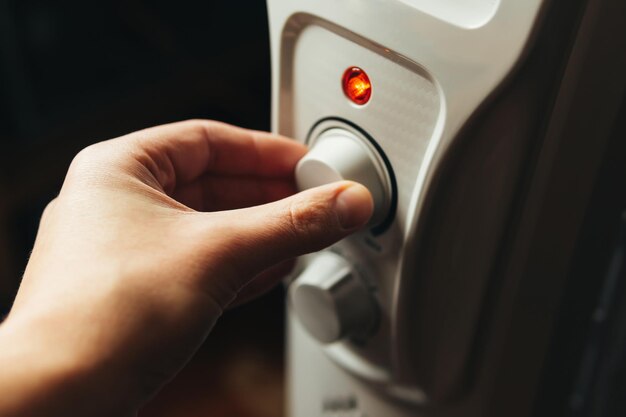Finding the Reset Button on Your Refrigerator: Myth or Reality?
Why You’re Confused About the Refrigerator Reset Function
Picture this: You open the fridge door, and the light doesn't turn on. The chilling compartment is unusually warm, and panic sets in. The appliance that keeps your food fresh and your drinks cold seems to have failed. Before jumping to replace or repair, many wonder, "Is there a reset button on my refrigerator?" This question is surprisingly common and a testament to the complexity of modern appliances. Let's delve into the truth behind refrigerator resets and how you can potentially solve minor fridge woes without professional help.
The Myth of the Reset Button
Does a Magic Button Exist?
The idea of a single reset button inside your refrigerator is somewhat of a myth. While some appliances boast an easily identifiable reset switch, refrigerators typically do not come with a universal reset function. Unlike your router, which can recover with a simple press, refrigerators are more complex. This lack of a singular reset button stems from the intricacies involved in managing temperature, complex electronic controls, and other tech features now standard in today's models.
Why Resetting Might Be Necessary
Understanding When a Reset Helps
Despite the lack of a standard reset button, there are scenarios where resetting your refrigerator can help:
- Power Outages: Sometimes, fluctuations during a power outage might cause your fridge to malfunction.
- Error Codes: Modern refrigerators often have digital displays that can indicate errors with specific codes.
- Cooling Issues: If you've checked for mechanical issues and none are apparent, a reset may occasionally realign functionalities.
How to 'Reset' Your Refrigerator Manually
Common Manual Reset Steps
While there isn't a one-size-fits-all reset button, some general steps can be taken to manually reset most refrigerators:
Unplug the Unit: Disconnect your refrigerator from the power source. Make sure it is completely unplugged from the wall outlet to ensure an effective reset.
Wait It Out: Leave the refrigerator unplugged for about 10 to 15 minutes. This waiting period helps clear the electrical system.
Replug and Restart: After waiting, plug the refrigerator back into the power source and switch it on. Give it some time to reboot and reach the optimal temperature.
Check the Controls: Many refrigerators feature digital control panels. If yours has one, go through the settings to ensure that your desired temperature and options are selected.
Exploring the Digital Controls
Navigating Through Tech-Savvy Fridge Settings
Today’s high-tech refrigerators come with intricate digital touch panels that let you control settings with unparalleled precision, albeit at the cost of simplicity. Here’s what you need to know:
Temperature Settings: Most fridges allow you to set specific temperatures for the fridge and freezer sections. Ensuring these are correctly set is crucial.
Power Freeze/Chill: Some units have these specific modes to boost cooling rapidly. It's a nice feature to consider after a reset.
Error Codes: Check your refrigerator’s manual for a list of error codes, which can provide insights into potential soft reset needs.
Troubleshooting Common Issues
When a Manual Reset Doesn’t Cut It
If resetting doesn’t fix the problem, these issues might be occurring:
Blocked Vents: Ensure that internal vents aren't blocked by food, preventing air circulation.
Coils and Condensers: Dirty coils can massively reduce efficiency. Cleaning these might restore proper operation.
Door Seals: Inspect the fridge door seals. Any leaks can cause the refrigerator to underperform.
Frequently Asked Questions (FAQs)
FAQs About Refrigerator Functionality
Can resetting my refrigerator harm it?
- Generally, performing a manual reset as described is safe. However, repeated resets without addressing underlying issues may exacerbate existing problems.
Is unplugging the same as resetting?
- Unplugging for a short period akin to a reset, clearing minor electronic glitches.
Should I call a technician if a reset doesn't work?
- If issues persist post-reset and simple troubleshooting, consulting a professional is recommended.
Essential Tips for Maintenance
Keeping Your Fridge Running Smoothly
🔧 Preventive Maintenance Tips:
Regular Cleaning: Clean behind and underneath your refrigerator periodically. Dust-free coils enhance performance.
Check Temperature Regularly: Ensure that fridge and freezer sections maintain optimal temperatures.
Inspect Seals and Doors: Make sure there are no gaps or leaks in seals and that doors close securely.
Summarizing Key Points
Here’s a quick glance at how you can manage your refrigerator:
| Task | Tip 📝 |
|---|---|
| Manual Reset | Unplug, wait 10-15 mins, then replug. |
| Control Check | Verify settings on the digital panel are optimal. |
| Vent Blockage | Ensure no food items block the internal airflow. |
| Cleaning Coils | Regularly remove dust from coils to optimize performance. |
| Door Seal Inspection | Look for wear and tear on seals to prevent air leaks. |
Wrapping Up the Fridge Reset Dilemma
While your refrigerator may not have a designated reset button, understanding the underlying principles of how it works—and how you can manually reset some functionalities—empowers you to tackle small fridge hiccups confidently. Maintaining your appliance through simple preventive measures further ensures it keeps your food fresh for many years to come.
Remember, when faced with persistent trouble, a professional's help ensures safety and efficiency in restoring your fridge to top form. Your refrigerator is a vital part of the household, and keeping it in prime condition is essential. Whether through a simple unplug or a complete tech-savvy troubleshooting, the goal is a fridge that works as it should, when it should.
